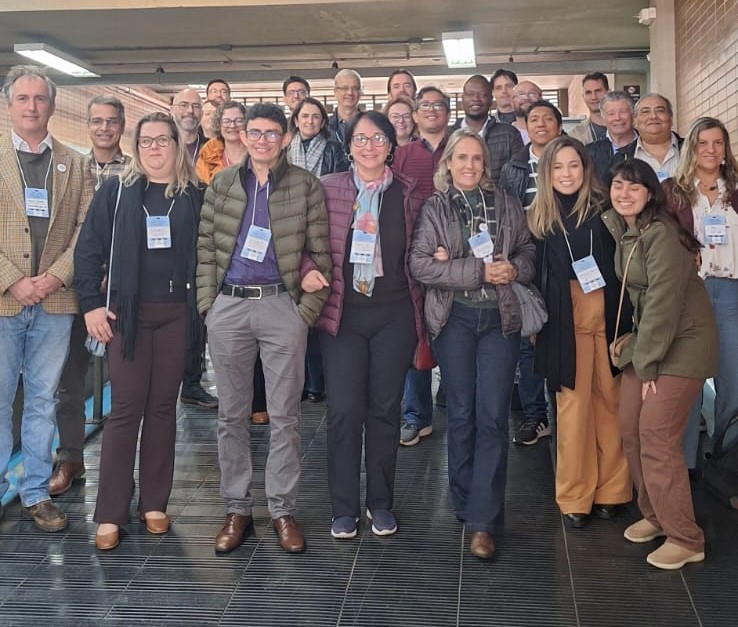

Fish, a food of aquatic origin, has greater potential health benefits than other animal sources (image: Freepik)
In the nearly three years since its creation, the Fish for Health Research Center has achieved significant results in understanding the nutritional value and consumption habits of fish in the state of São Paulo, received new investments, and is preparing to expand its network of associated researchers.
In the nearly three years since its creation, the Fish for Health Research Center has achieved significant results in understanding the nutritional value and consumption habits of fish in the state of São Paulo, received new investments, and is preparing to expand its network of associated researchers.

Fish, a food of aquatic origin, has greater potential health benefits than other animal sources (image: Freepik)
By André Julião | Agência FAPESP – Started in October 2022, the Fish for Health Research Center, supported by FAPESP under the Science Centers for Development program (SCDs), has already produced significant applied scientific results regarding the quality of fish for human health and knowledge of consumption habits, among other findings.
“The center is a research effort that unites the scientific capacity of academia with the São Paulo state government’s mandate on the subject through the Fisheries Institute as well as companies that participate in and co-finance scientific research aimed at solving a concrete problem for society,” says Daniel Lemos, professor at the Oceanographic Institute of the University of São Paulo (IO-USP) and coordinator of the project.
In addition to the IO-USP and the Fisheries Institute, which is linked to the São Paulo Agency for Agribusiness Technology (APTA) of the São Paulo State Department of Agriculture and Supply, the center includes researchers from the University of Mogi das Cruzes (UMC) and the Federal University of Rio Grande do Norte (UFRN). Companies from Brazil and other countries, such as Norway, the Netherlands, France, and the United States, are also participating in the project.

Team from the Fish for Health Research Center (photo: Fish for Health)
The center’s most recent work includes a survey on fish consumption habits in the state of São Paulo, published at the end of last year. The survey revealed that fish consumption is low in São Paulo and that tilapia is the state’s favorite fish.
“There are studies showing that fish can be healthier than other animal proteins. A major impediment to higher consumption by Brazilians is the price, which is still high for a significant portion of the population,” says the researcher.
Brazil is currently the 16th largest producer of farmed fish in the world and is poised to be among the largest producers in the coming decades, according to Lemos. Brazil already dominates production of other foods, such as oranges, corn, soybeans, beef, and chicken.
About 50 years ago, he recalls, poultry production was small, and prices were high. However, with technological development and its adoption on farms, production increased exponentially, and today, chicken is the most popular meat in the country.
“Tilapia is on the way to becoming the next chicken and can achieve sufficient production for the domestic market and for export at a low cost,” he points out.
In addition to reducing prices for consumers, Lemos believes it is necessary to make products more accessible and encourage people to diversify their eating habits by highlighting the nutritional advantages of aquatic foods over red meat.
As part of a larger survey, the center is currently conducting an online survey to assess acceptance of products made from mechanically separated meat (MSM) from fish, such as hamburgers, meatballs, kibbeh, sausage, and mortadella.
While these products are common in the beef, pork, and chicken industries, they are relatively rare in the fish industry, where what is not filleted or steaked is usually used for animal feed or fertilizer. “Just think that tilapia fillet represents, on average, only 30% of the fish,” says Lemos.
More nutritious
Improving the nutritional quality of fish is one of the main focuses of the center, which is currently conducting major research to assess the nutrients and contaminants present in the most commonly consumed fish in the state. The center is also testing potential applications for enriching these foods.
For example, in a study recently published in the journal Aquaculture Research, the researchers tested replacing fishmeal or fish oil in the feed of farmed shrimp with algae oil.
The goal was to enrich the shrimp meat with EPA and DHA (omega-3) fatty acids obtained from microalgae. These fatty acids are essential polyunsaturated fats for the human body. This method does not rely on over-exploited fish stocks to feed farmed animals.
The result was an animal protein with sensory attributes equivalent to those of shrimp fed with feed containing fish oil. The study also verified that the levels of EPA and DHA in the meat can be increased with increased inclusion in the diet.
Along similar lines, a research project at the center is investigating genes associated with the accumulation of omega-3 fatty acids in tilapia meat. The goal is to identify genetic markers that can be used in future breeding programs to create tilapia that are naturally richer in healthy fats.
The success of the Fish for Health Research Center has attracted new investments and associated researchers who will soon strengthen the center’s research and dissemination of scientific knowledge about fish and health.
To find out more about the Fish for Health Research Center, visit pescadoparasaude.org/en/home-english/.
Republish
The Agency FAPESP licenses news via Creative Commons (CC-BY-NC-ND) so that they can be republished free of charge and in a simple way by other digital or printed vehicles. Agência FAPESP must be credited as the source of the content being republished and the name of the reporter (if any) must be attributed. Using the HMTL button below allows compliance with these rules, detailed in Digital Republishing Policy FAPESP.





